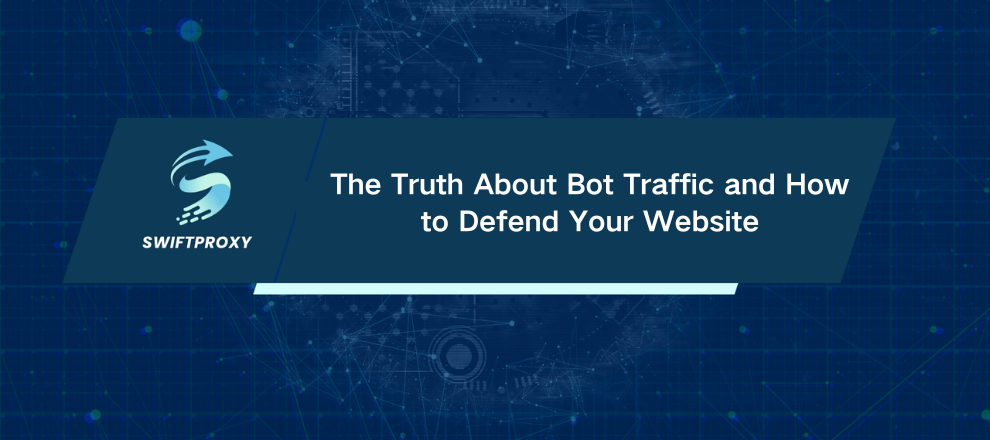The Truth About Bot Traffic and How to Defend Your Website

Bots are everywhere. Some are harmless digital assistants that help us navigate the web. Others? They're silent saboteurs siphoning data, hijacking accounts, and destroying trust — all in the blink of an eye. If you run an online business, understanding how to spot and block these bad actors isn't just important; it's non-negotiable.
Introduction to Bot Traffic
Not all bots are villains. Bots are automated software programs that crawl, click, fill out forms, and perform tasks humans would find repetitive or slow. But here's the twist — while some bots improve services (like search engine crawlers), others wreak havoc through fraud, scraping, and denial-of-service attacks.
Recognizing and controlling this non-human traffic is critical. Otherwise, your analytics become meaningless, servers buckle under phantom requests, and real customers suffer.
Why Bot Detection Matters to Your Business
Shielding Against Attacks
Imagine waking up to find your customer data leaked or your website offline during peak hours. Malicious bots can brute-force credentials, trigger data breaches, and execute DDoS attacks that cripple services and tarnish your brand overnight. They steal revenue and erode customer trust in a heartbeat.
Stopping them requires more than just a basic firewall. You need intelligent systems that can differentiate a human's genuine click from a bot's robotic script. And crucially — defenses that don't frustrate your real users.
Protecting Your Content
Your original content is gold — whether it's articles, product data, or exclusive media. Bots that scrape your content can undercut your SEO rankings, redistribute your intellectual property, or give competitors an unfair edge.
Worse, content scraping can dry up crucial revenue streams. Subscription-based platforms, pay-per-view services, and ad-driven websites depend on real human eyeballs. Bots distort engagement metrics and dilute ad value, leading to wasted budgets and skewed decisions.
Preserving Performance and User Experience
Bots don't just steal data; they consume server resources. Left unchecked, they can slow down page loads, trigger errors, and frustrate your real visitors — the very people you're trying to delight. By filtering out malicious traffic, you protect your infrastructure and ensure your human users get the fast, reliable experience they expect.
Ensuring Analytics Accuracy
How can you improve if your data is garbage? Bots inflate page views, skew conversion rates, and mislead your marketing decisions. By excluding bot-driven traffic, you get a clear, honest view of user behavior — what content resonates, where drop-offs happen, and how campaigns truly perform.
Accurate analytics let you fine-tune campaigns, optimize features, and serve customers better. It's the difference between flying blind and driving with a clear map.
Maintaining Compliance
Industries like finance, healthcare, and education face strict data protection mandates. Allowing bots to slip through and access sensitive data can lead to massive fines and reputation damage. Anti-bot measures help ensure compliance with regulations like GDPR and CCPA, keeping your data — and your business — safe.
Why Bots Exist
Bots aren't going anywhere. Good bots help index content for search engines, monitor prices, and assist in customer service. Meanwhile, bad bots engage in credential stuffing, click fraud, and account takeovers. They automate fake account creation, scrape price data, and flood servers to disrupt your operations.
Understanding their motives helps you predict their moves and stop them cold.
How Bot Detection Works
Detecting bots is an art and a science. It's not just about IP blocks or blacklists. Modern detection systems analyze traffic patterns, behavior, and technical fingerprints.
High request volumes in a short window? Suspicious. Mouse movements that look too perfect (or non-existent)? A red flag. Sessions lasting a fraction of a second or running unnaturally long? Possible bot.
Other clues include sudden spikes in login failures, mass account creations, or unexpected traffic from regions where you don't even have customers. Smart systems cross-check all these signals and adapt in real-time.
How Bots Outsmart Detection
Bots evolve constantly. They rotate IP addresses using proxies, spoof user agents to appear as different browsers, and even solve CAPTCHAs using machine learning or human farms. Some bots detect and avoid honeypots, those hidden traps meant to lure them in.
Advanced bots even mimic human behavior by randomizing click timings, scrolling unpredictably, and introducing artificial delays. They can create noise in data, confusing machine learning models trained to spot them. Think of it as a high-stakes cat-and-mouse game where the mice keep getting smarter.
How to Stop Bot Traffic
Here's how you can push back:
Robots.txt files — Guide friendly bots and tell them where they shouldn't go.
CAPTCHAs — Filter out bots with challenges humans can handle.
Rate limits — Cap requests per IP to catch brute force and scraping attempts.
Honeypots — Invisible traps that only bots will trigger.
Dedicated bot detection software — Use behavioral analysis, fingerprinting, and reputation checks to separate visitors from intruders.
Final Thoughts
Bots are a double-edged sword — helpful on one side, potentially devastating on the other. Understanding them, tracking them, and stopping them is no longer optional. It's your first line of defense in protecting data, revenue, and your brand's hard-earned reputation. Let's make sure you stay ahead of the bots, not the other way around.

















































